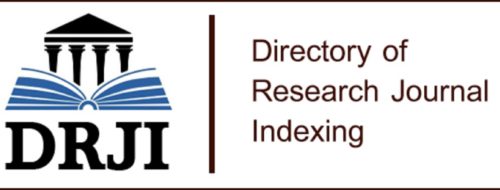USE OF CRUSHED RECYCLED BRICK AS A SUBSTITUTE FOR FINE AGGREGATE IN 21 MPA CONCRETE DESIGN
Keywords:
Crushed bricks, compression resistance, aggregates, workability, mix designAbstract
One of the main problems in the construction industry is the solid waste that comes from the demolition of old buildings and that is not disposed of technically. To provide a solution, for reusing this waste, it is important to have technical studies that support the use of recycled crushed bricks as a substitute for fine aggregate and to be able to determine its viability and resistance. This study aims to analyze the use of crushed recycled brick as a substitute for fine aggregate in a 21 MPa design, per INEN and ACI 318 standards. The methodology used is of a mixed nature, being both descriptive and experimental. For this purpose, fine and coarse aggregates from two quarries located in different provinces of Ecuador were used. The fine aggregate was substituted in percentages of 15, 20, 25 and 30%, with the elaboration of 5 mix designs, being the initial mix the standard one, and a constant water/cement ratio of 0.55; in addition, a super plasticizing additive was used. Thirty-five concrete cylinders of 100 x 200 mm were made, which were subjected to compressive strength and it was possible to determine which percentage was the most optimal. With this, it was possible to demonstrate that a concrete composed of crushed recycled bricks, substituting up to 25% of the fine aggregate, is resistant and workable.
Keywords: Crushed bricks, compression resistance, aggregates, workability, mix design.
References
Chavarria-Reyes, L. J., Chavarry-Vallejos, C., Valencia-Gutiérrez, A., Pereyra-Salardi, E., & Hurtado-Iglesias, C. (2021). Arcilla cocida como agregado fino para mejorar las propiedades mecánicas del hormigón estructural. Aporte Santiaguino, 14(2), 147-158.
Espinales, V. J. P., Lago, B. C., & Mera, J. C. G. (2023). Composición de mezclas de agregados gruesos y finos en la resistencia a la compresión y porosidad del hormigón. Polo del Conocimiento, 8(11), 600-613.
García-Moreta, L. D., Morrillo-García, V. A., & Guerra-Mera, J. C. (2023). Características de dos agregados gruesos triturados que influyen en la porosidad del hormigón. Revista Científica INGENIAR: Ingeniería, Tecnología E Investigación, 6(11 Ed. esp.), 16-28. https://doi.org/10.46296/ig.v6i11edespfeb.0086
Guerra-Mera, J. C., Puig-Martínez, R., Castañeda-Valdés, A., & Baque-Campozano, B. P. (2023). Estado del arte sobre durabilidad de estructuras de hormigón armado en perfiles costeros. Revista Científica INGENIAR: Ingeniería, Tecnología e Investigación, 6(11), 2-20. https://doi.org/10.46296/ig.v6i
Guevara, A. D. (2019). Evaluación de la resistencia del concreto con reemplazo del agregado fino por ceniza de cascarilla de arroz. http://repository.unipiloto.edu.co/handle/20.500.12277/6479
Hernández-Doria, E., & Rojas-Montañez, J. P. (2022). Estudio de la resistencia a la compresión del concreto, con vidrio molido reciclado como sustituto parcial del agregado fino. https://repository.ucatolica.edu.co/entities/publication/13d79ca5-8dc9-4655-aaa4-57480ad3748c
Instituto Americano del Concreto. ACI 318: Requisitos del código de construcción para hormigón estructural.
Llatas, C. (2011). A model for quantifying construction waste in projects according to the European waste list. Waste Management, 31(6), 1261-1276.
NTE INEN 1573. (2010). Instituto Ecuatoriano de Normalización, Norma Técnica Ecuatoriana. Resistencia a la compresión de especímenes cilíndricos de hormigón de cemento hidráulico.
NTE INEN 1578. (2010). Instituto Ecuatoriano de Normalización, Norma Técnica Ecuatoriana. Asentamiento del Hormigón de Cemento Hidráulico (Revenimiento).
Olofinnade, O. M., Ndambuki, J. M., Ede, A. N., & Booth, C. (2017). Application of Waste Glass Powder as a Partial Cement Substitute towards more Sustainable Concrete Production. International Journal of Engineering Research in Africa, 31, 77-93.
Olofinnade, O., & Ogara, J. (2021). Workability, strength, and microstructure of high strength sustainable concrete incorporating recycled clay brick aggregate and calcined clay. Cleaner Engineering and Technology, 3, 100123.
Suárez-Silgado, S. S., Betancourt Quiroga, C., Molina Benavides, J., & Mahecha Vanegas, L. (2019). La gestión de los residuos de construcción y demolición en Villavicencio: Estado actual, barreras e instrumentos de gestión. Entramado, 15(1), 224-244. https://doi.org/10.18041/1900-3803/entramado.1. 5408
Tareq-Noaman, A., Subhi Jameel, G., & Ahmed, S. K. (2021). Producing of workable structural lightweight concrete by partial replacement of aggregate with yellow and/or red crushed clay brick (CCB) aggregate. Journal of King Saud University - Engineering Sciences, 33(4), 240-247.
Published
How to Cite
Issue
Section
License
Copyright (c) 2024 Scientific Journal INGENIAR: Engineering, Technology and Research

This work is licensed under a Creative Commons Attribution-NonCommercial-ShareAlike 4.0 International License.

















